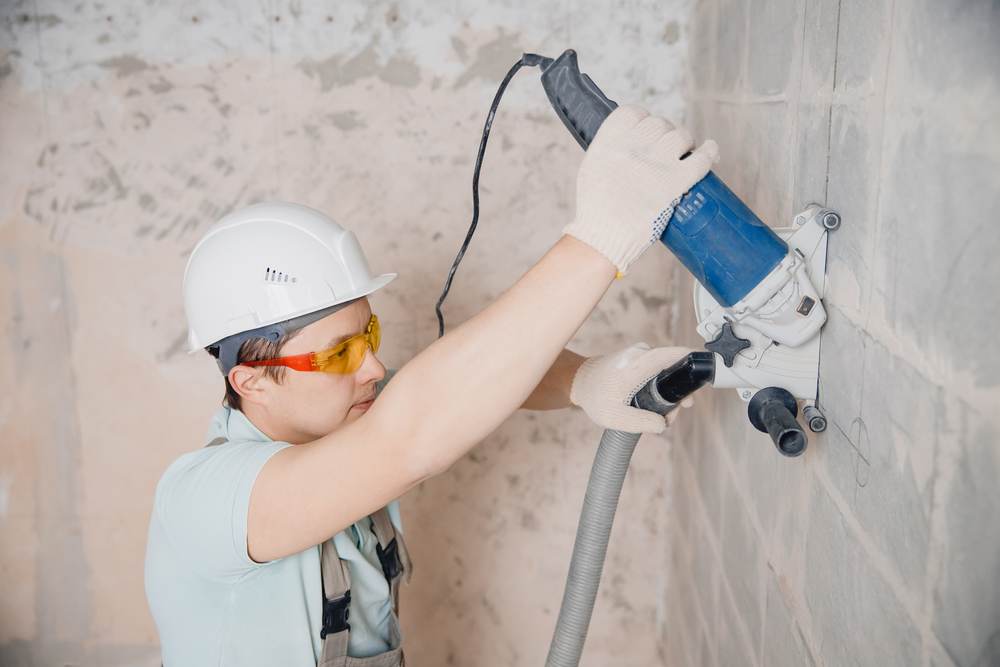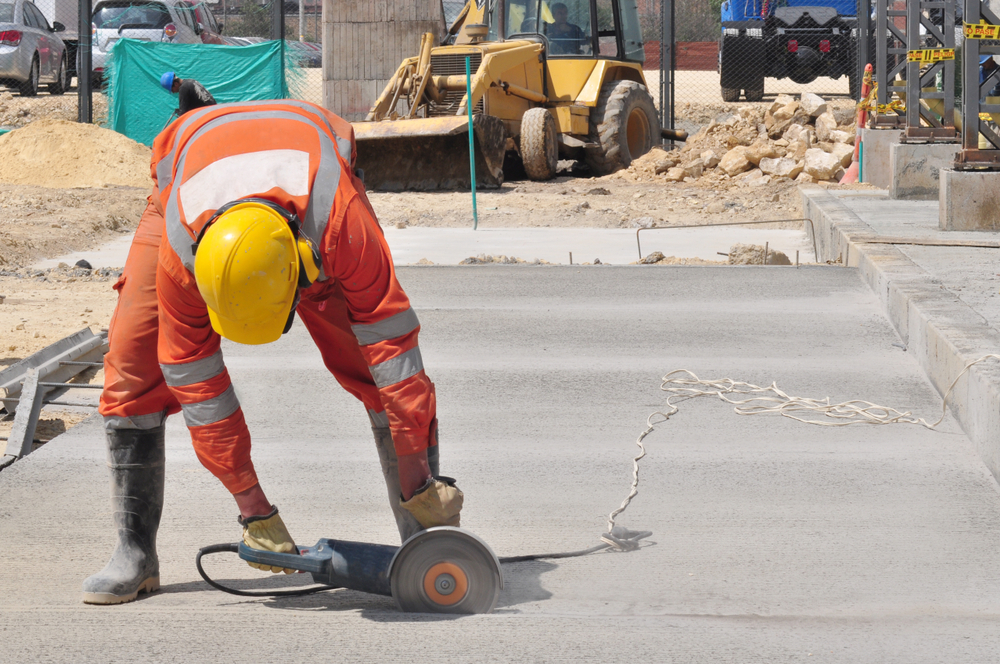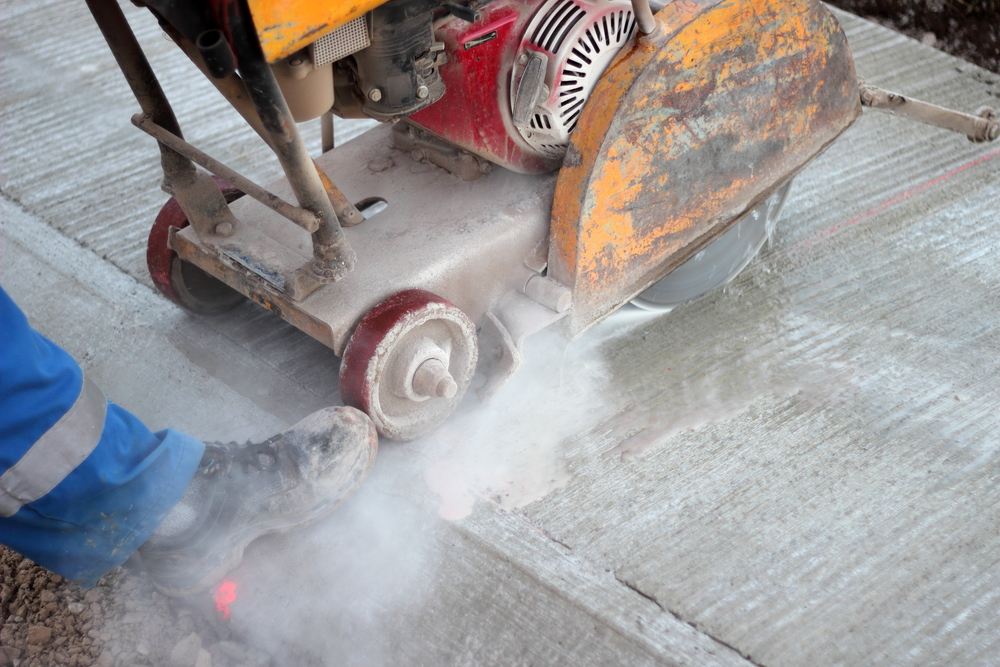Sometimes it is necessary to have to cut through old concrete walls when renovating. Although it is ideal to cut concrete within a few hours after it is poured, it is still possible to cut through old concrete without causing too much damage, if any at all.
When cutting concrete walls, you have to consider a few things:
- Ductworks
- Electrical conduits
- Piping
- Mechanical and electrical systems
- Other building materials that run your walls
It is important to know what is inside your walls before you start cutting. By doing so, you avoid damaging any important pipes and lines saving you time and money in repairs.
Once you have mapped out the cables and pipelines inside the concrete wall, it is time to determine the right tools and equipment to use.
Things You Need
- Chalk or Marker
- Straight edge
- Tape
- Plastic Sheets
- Tape Measure
- Rotary Drill
- Sledgehammer
- Concrete Saw (preferably diamond blade)
Then most importantly, you must make sure that you use the right PPE or Personal Protective Equipment:
- Respirator
- Goggles
- Face Mask
- Ear Protection
- Helmet
- Coveralls
- Gloves
- Safety Boots
Now It’s Time To Cut!
Now that you have everything you need, you are ready to cut through the concrete wall. Remember not to rush and follow these steps:
- Mark the space on the wall where you plan to cut the square opening. Make sure you do not cut on an area where there are any utility lines. Use a tape measure to ensure you make accurate, straight cuts.
- Do the same on the other side of the wall. Make sure that both sides have the same measure and are on the same level.
- Cover all entrances with plastic sheets and tape them in place to make sure that the dust is contained within the area. Cover all furniture, fixtures, and other items in the area to protect them from the concrete dust during cutting.
- Ensure proper ventilation.
- Drill through each corner of the square outline using a masonry bit and rotary hammer. The holes will mark the boundaries of the outline and help guide you when sawing.
- Start cutting using your concrete saw. Start sawing over the marks on one side of the wall. Carefully cut along the lines. Start with shallow cuts.
- Do the same on the other side of the wall. Start with slow and shallow cuts.
- Knock the cut concrete slowly using a sledgehammer.
- Chisel out any remaining concrete from the edges of the square opening.
Important Reminder:
Consult your structural engineer regarding your measurements and process of cutting out the square opening on your concrete walls before you start cutting out a new door.
Safety Reminder:
DO NOT forget to wear your personal protective equipment. SAFETY FIRST!
Important Tips:
- Use the wet sawing to minimise concrete dust. Wet sawing also keeps your saw blade from overheating. Overall, wet sawing is environment-friendly, more effective, and efficient.
- Do a regular check and maintenance on your concrete saw. Do not use your saw unless it has been checked for any potential safety issues.
- Keep your work area clean and free from debris and anything that can trip you or cause any accidents.
- Turn off and unplug any devices when not being used.
- Make sure you know how to operate a concrete saw before you decide to do it yourself.
Get the Pros
For most projects, it may seem cost-effective to do it yourself. That is not true for concrete cutting. Handling the concrete saw itself is a challenge and very dangerous.
And if you are not an expert concrete cutter, you may cause damage to your walls and end up spending more money on repairs. Renting equipment is expensive too. So, leave it to the pros.
By hiring professional concrete cutters, you pay a one time fee with a guarantee that the work will be done properly and will be done on time. There will be no re-dos and delays, no damages, no extra time for repairs.
Professional concrete cutters can do quick but precise cutting. This will make your renovation project run smoothly and without any delays. The best part is, you do not have to lift a finger or risk losing one.
If you are looking for a specialist concrete cutting company who uses only the best practices to get the job done right, then please call us at Megasaw on 1300 920 419 or contact us through our website.










